Best retro motorcycle helmets | Classic looks with modern safety, as tested by MCN
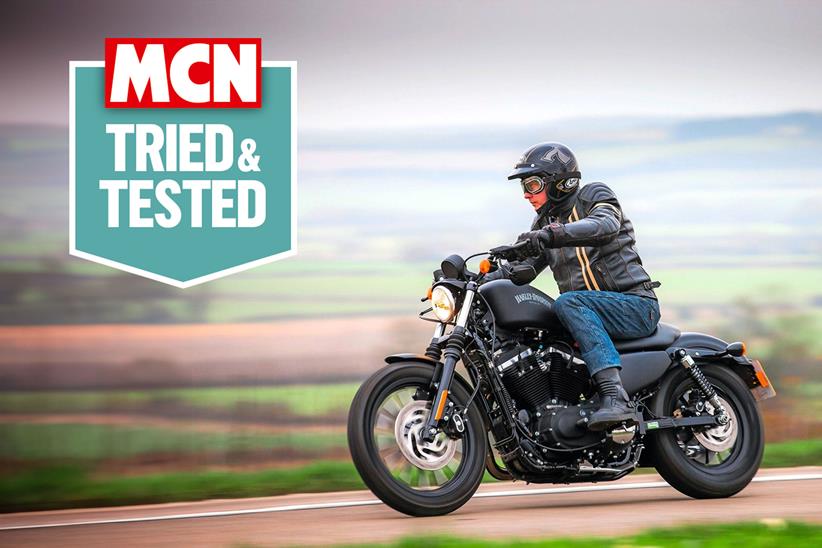
Love riding in the classic sense? You should look the part. And while the riders of yore made do with minimal protection (or none), modern materials and design mean you don’t have to choose between suave and safety. In America (and elsewhere of course), we can have it all.
Related buying guides
- Best flip-front helmets chosen by MCN
- Best ADV helmets we’ve been wearing recently
- Best Bluetooth headsets for motorcycle helmets
From leather jackets to gloves to bike boots, there’s an embarrassment of riches as far as retro-themed gear. Same for motorcycle helmets. There are more retro-style helmets available than ever. Legendary US brand Bell, who invented the first “full face” helmet back in the 1960s, led the way when it introduced its retro Bullitt full face in 2014.
There’s plenty of helmet types to choose from. Some are full face, some open face (which obviously don’t offer as much protection) and there’s even some classic MX styled offerings. Many feature ECE, Snell or SHARP certification and use modern fastenings and visor openings that offer maximum protection—with retro styles and color schemes.
Tried and tested retro helmets
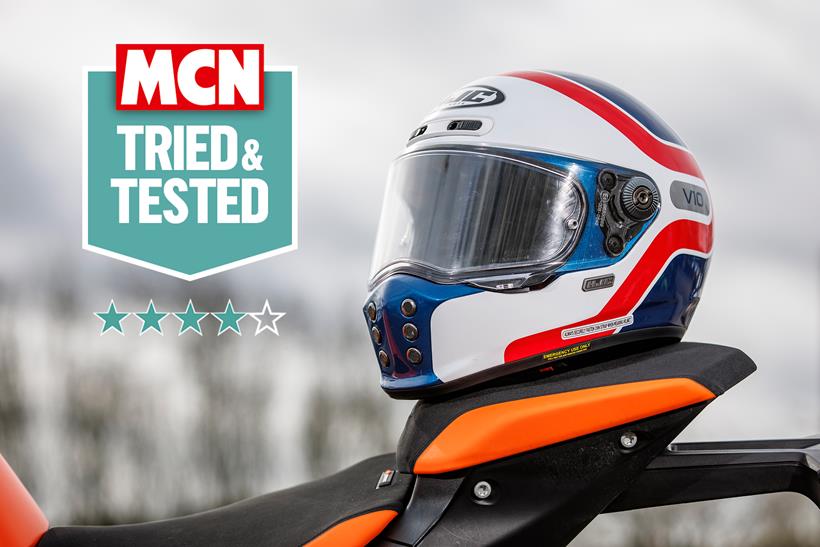

"If the looks are up your street and you’re looking for something to wear predominantly in spring through to autumn, the HJC V10 is a great option. It may not have the lustre and premium feel of more expensive helmets but for the asking price, it’s a really good quality option. I wouldn’t feel short changed if I spent my own money on one and when you add in the warranty and the fact the Pinlock is included, it seems an even sweeter deal. I do still have my reservations about using it in very hot weather and will report back later in the year on that front."
Read our full HJC V10 review
Pros
- Looks great
- Retro styling
- Intercom ready
- Good paint finish
Cons
- visor changes takes time
- Feels slightly budget
- Tight to put on and off
| Construction | Fibreglass shell construction |
| Type | Full-face with a retro feel |
| Chinstrap type | Double D-ring |
| CE Rating | ECE 22.06 |
| Warranty | 3 years |
- Emergency release cheek pads
- Detachable and washable interior
- Bluetooth compatible with Smart HJC (sold separately)
- Pinlock included
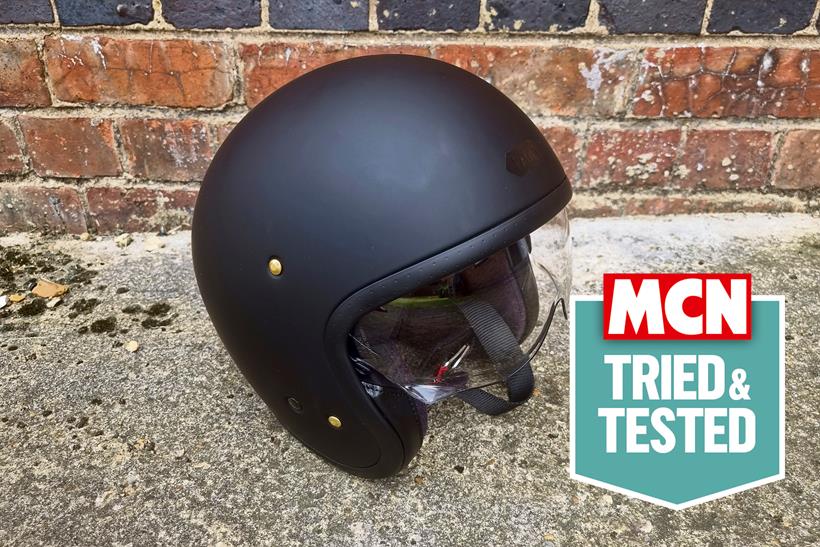

"Before I tested this helmet, I’d never worn an open-face. But, since I was touring America in the middle of summer, I opted to give it a go. The lack of a chin bar meant I felt a little exposed, but this sensation quickly disappears when you’re on the ride. Plus, the J-O’s composite fibreglass shell is made from the same blend of fibres Shoei uses on its top-spec racing helmets and it features the same kind of multi-density EPS. I think it’s a classic and understated design, particularly its low-profile shell shape, as some other open-face helmets can give you a ‘lightbulb head’.
"The clear visor with its three-levels of closure meant I didn’t have to invest in goggles and gives that extra bit of protection from the wind – as well as being vital in the rain! I also like that the J-O has a double-D ring chin strap. There’s no drop-down sun visor but the fit is comfy enough for me to be able to pop on a pair of sunnies. It is fabulous in warm weather and would be great for city riding too."
Pros
- Great for warm weather or city riding
- Looks good and has a nice shape
- The three position visor makes it very usable without goggles
Cons
- No integral sun visor
| Construction | Multi-composite |
| Chinstrap type | Double-D |
| ECE Rating | 22.05 |
| Warranty | 5 year |
- Removable and washable interior
- Goggle belt
- CJ-3 visor with 3 lockable positions


Full review coming soon.
Other options to consider
There are more options out there and, although we’re working hard to bring you review content, we’ve not done the miles just yet.
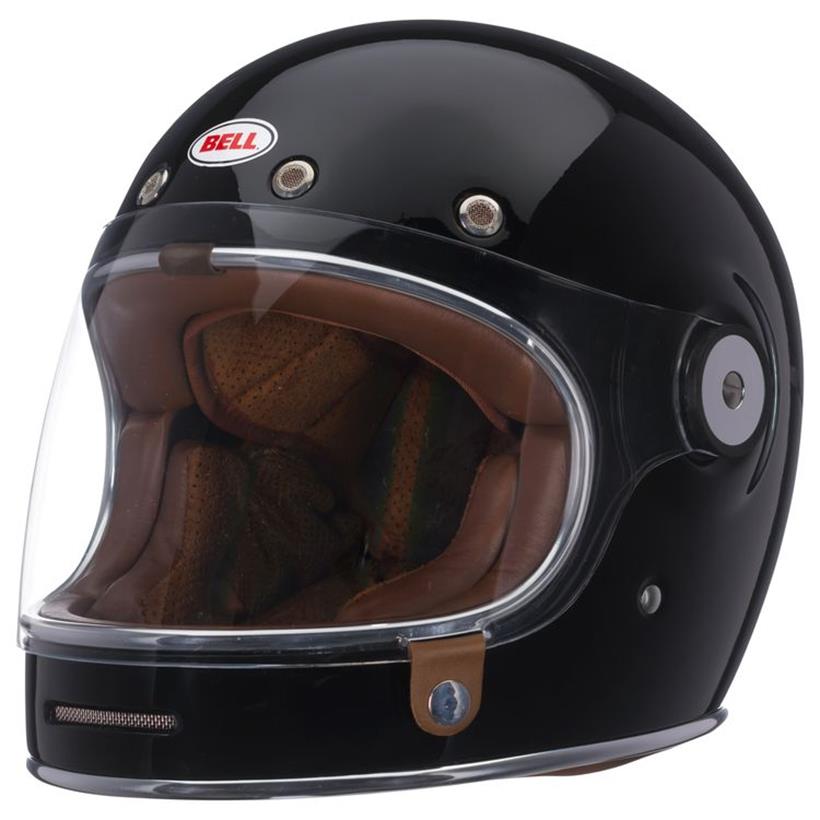

Thankfully, styling aside the Bullitt shares little else of the original - things have moved on a long way since then, after all.
Full review coming soon.
Frequently asked questions
Can I wear goggles with it?
If you plan on riding off-road, keep this question in mind. Visors can get covered in mud and sometimes mist up. Goggles help with ventilation. Many adventure lids feature removable visors, letting you wear goggles instead.
Does it have a Pinlock insert?
Many helmets come with a Pinlock (anti-fog inserts) included, while some include mounts and Pinlock is sold separately. In the case of the latter, factor in this extra expense.
How much does it weigh?
A heavy helmet puts extra strain on your neck, making extended riding difficult. A lightweight helmet can help add enjoyment (and miles) to longer touring.
Is the lining removable?
All helmets are susceptible to sweat and odor, especially ones used for strenuous off-road or trail riding. A removable, washable inner lining is highly recommended.
Is the visor easy to remove?
An easily removable visor makes cleaning simple. Look for a visor that can be removed without specialized tools.
Does it have an integrated sun visor?
An integrated “flip-down” sun visor means never having to stop to put on sunglasses.
Is it well ventilated?
A hot helmet is an uncomfortable one. Make sure the helmet has vents easily operated by a gloved hand. The more vents, the cooler your head will be. Heads up, some vents do create additional wind noise.
Is it ready for a communications system?
“Communications ready” means a helmet is designed with extra recesses around the ear to insert headphones for a communications system. Without them, headphones can stick out in irritating and even painful ways.
Is it designed for glasses?
If you wear prescription glasses, look for helmets designed to allow glasses to sit comfortably between the lining and your face.
What kind of strap fastener does it have?
Helmets come with two types of helmet strap fastener – a D-Ring or a ratchet-style. The D-Ring requires manually threading and tightening of the strap, while the ratchet-style system is a simple push-fit. The choice between them is a matter of rider preference.
Can I move the peak?
Some helmets have a peak to help shade your eyes from the sun. Make sure it can be easily moved or removed altogether, if desired. Look for cut-outs or aerodynamic features to prevent wind-trapping at speed which puts extra strain on your neck.
Can I buy a dark visor?
Aside from laws mandating various levels of eye and face protection (depending on the state), riders are free to choose tinted, shaded or dark visors as they see fit. Make sure visibility holds up in changing conditions like shade, tunnels or enclosed spaces.
What are the pros and cons of open-face helmets?
Open-face helmets offer excellent ventilation and comfort. The main drawback is safety. Your face is exposed to anything you’ll encounter in a ride.
How safe are open-face helmets?
An open face helmet is considerably less safe than a full-face helmet. From a common sense perspective, you fall forward in the direction of your face. Open-face helmets leave you less unprotected, with obvious consequences in a crash.
That said, being comfortable in your gear is a part of safety. Some riders are comfortable assuming more risk than others. As long as you’re wearing a helmet of any sort, you’re legally free to ride in 47 out of 50 states.
What style of riding are open face helmets suitable for?
Open-face helmets are great for summer. For safety, we recommend only using them in dense urban environs and slow speed riding.
What safety ratings should I look for?
An ECE 22.06 (Economic Commission of Europe) rating is the gold standard in Europe. You may also see the previous ECE 22.05 rating on some remaining helmet stock. In the U.S., voluntary Snell certification is common, which also uses thorough testing methods for helmets. Look at the back of the helmet, towards the base for a Snell sticker, often placed next to a DOT sticker. All helmets sold in the U.S. must be DOT-certified, at a minimum. A helmet without a DOT sticker is considered a “novelty helmet” and should never be used for riding.
Open-face helmets won’t get an ECE 22.05 or ECE 22.06 rating. But some do get Snell certification. Snell refers to them as “¾ helmets”.
Be the first to know what’s coming in the latest issue of MCN, plus the latest road tests, recommendations, and competitions. Sign up to the MCN newsletter.
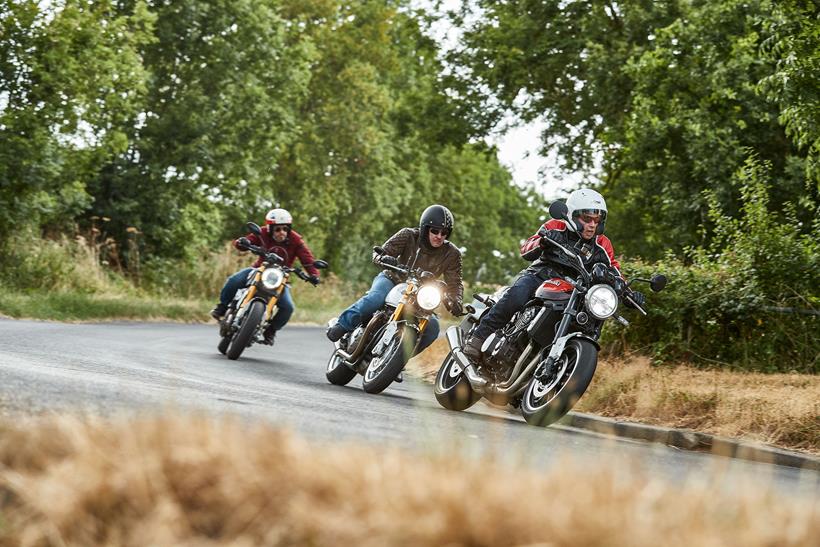
How MCN tests open-face helmets
The MCN team of expert journalists have decades of experience over hundreds of thousands of miles. We don’t torture test anything. We use it just like you do in the real world and in all conditions to deliver impartial helmet buying advice.
Each reviewer tests helmets in ways both subjective and objective. This includes the helmet’s safety rating, if comms systems are compatible, type of chin strap, weight and whether it has a drop-down sun visor, removable peak or other aerodynamic properties.
MCN covers countless miles each week and tries lots of options in a short space of time. We quickly discover which helmets feel great, which ones don’t and why.
We only feature helmets we’ve extensively tested. Comparison helmets will be included if deemed important and relevant. Testing is ongoing and we will continually add gear and products to our site.
To find out more, head to our dedicated page explaining how we test motorcycle products.
Scoring explained
Products are given a score from 1 to 5 stars. Beyond the ratings tab, you’ll find in-depth info on product and gear performance and attributes.
- 1 star – Poor performance in this category or overall. A helmet with a single star rating has fallen below the expected standard and should be avoided.
- 2 stars – Basic performance in this area or overall. A helmet with a two-star rating has managed to perform to a barely acceptable level and there is room for improvement. It might be lacking safety features, be poorly built or far too expensive to recommend.
- 3 stars – An average performance in this area or overall. A helmet with a three-star rating has achieved a basic level of performance and is deemed adequate.
- 4 stars – A product has performed over and above the accepted averaged in this category or overall. A helmet with a four-star rating has surpassed expectation and delivered in a particularly impressive way.
- 5 stars – A helmet has performed at the highest possible level in a particular category or overall. A product with a five-star rating has delivered to the highest possible level, impressing the tester with its performance. We would happily spend our own money on it.
- Just so you know, we may receive a commission or other compensation from the links on this website - read why you should trust us.




